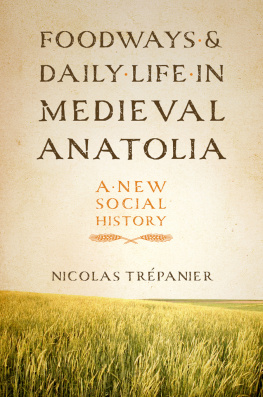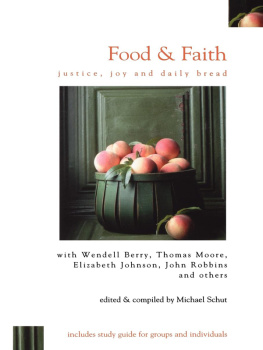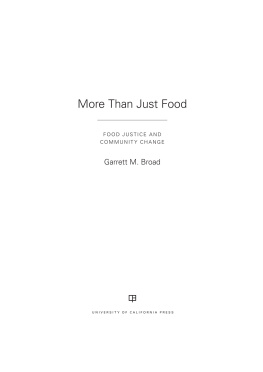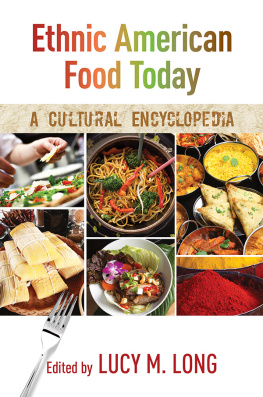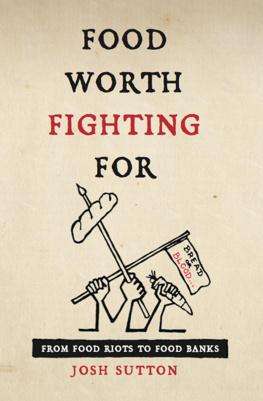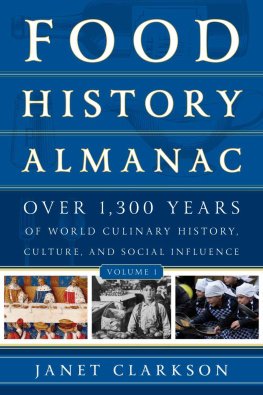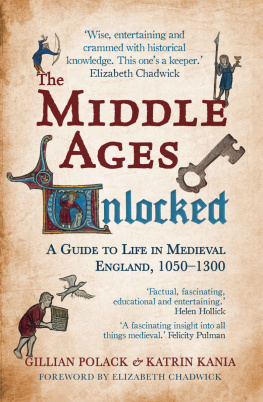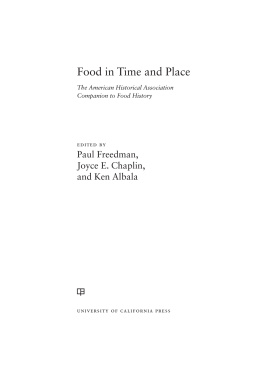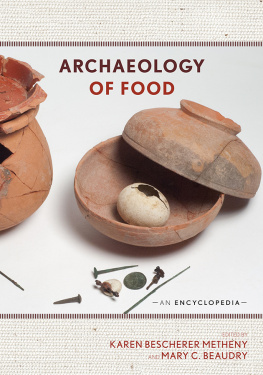(BY NICOLAS TRPANIER)
Foodways and Daily Life in Medieval Anatolia
A NEW SOCIAL HISTORY

University of Texas Press
AUSTIN
Copyright 2014 by the University of Texas Press
All rights reserved
First edition, 2014
Requests for permission to reproduce material from this work should be sent to:
Permissions
University of Texas Press
P.O. Box 7819
Austin, TX 78713-7819
http://utpress.utexas.edu/index.php/rp-form
LIBRARY OF CONGRESS CATALOGING-IN-PUBLICATION DATA
Trpanier, Nicolas, 1976
Foodways and daily life in medieval Anatolia : a new social history / by Nicolas Trpanier.
pages cm
Includes bibliographical references and index.
ISBN 978-0-292-75929-9 (cloth)
ISBN 978-0-292-76189-6 (ebook)
AcknowledgmentsA Note on TransliterationList of AbbreviationsIntroductionChapter 1. Food ProductionChapter 2. Food ExchangesChapter 3. Food ConsumptionChapter 4. Food and ReligionConclusionAppendix: SourcesNotesBibliographyIndex.
GT2853.T9 T74 2015
394.1'209561dc23
2014012689
ISBN 978-0-292-76188-9 (library e-book)
ISBN 978-0-292-76189-6 (individual e-book)
doi:10.7560/759299
To R.Y., who shows me where to look among the garbage and the flowers
Acknowledgments
I borrowed a lot of time and energy from many people over the ten years or so it took to bring this book into existence. As research turned into writing and then into revision, I kept borrowing from new people for new reasons, and I now find myself completely unable to pay back the accumulated debt. Lets be honest: I did not borrow the time and energy of so many friends and colleagues; I stole it.
Still, inability to repay debt does not prevent me from acknowledging it and from expressing gratitude to my victims. I should first mention my mentors, Cemal Kafadar, Amy Singer, and Scott Redford, who helped shape this research project from structure to fine grain. Each one has left a lasting imprint on my mind, using a different set of superpowers. Cemal Kafadar always listened to my ideas (some of them rather unorthodox) with an open mind, and on those occasions when he expressed his disagreement or suggested alternative ways of thinking, he probably saved me from myself. My education as a historian greatly benefited from Amy Singers sharp mind, natural-born mentor character, and superhuman ability to focus on the big picture and the tiniest detail all at once. Scott Redford took me in as an archaeological orphan a number of years ago and ran me through the basics of a foreign discipline despite having no obligation whatsoever to do so. I owe each of them a debt of gratitude that is even deeper than the respect and admiration I have for them as scholars.
The methodology presented in this book requires a healthy degree of linguistic self-confidence. I had the immense privilege (and pleasure and, on occasion, pain) of learning Persian from Wheeler M. Thackston. If I were asked to list the best teachers I encountered through a quarter century as a student, Professor Thackstons name might be the very first to pop into my mind; if I were asked to list the least demanding, it would not. I was also blessed with the chance of studying Old Anatolian Turkish under the infinitely kind, infinitely patient supervision of the late inasi Tekin. I would add that, beyond languages, I also benefited from guidance and professional opportunities given to me by Hakan Karateke, Helga Anetshofer, Stefan Winter, Roy Mottahedeh, Roger Owen, and Laurel Thatcher Ulrich, if the resulting list of names did not sound so much like bragging.
I stumbled into archaeology late in the game, but archaeology is a place where they pick you up when you falland then make sure you dont have a scorpion in your boots. Besides Scott Redford, I met there a crew that welcomed my beginners questions with smiles and inexhaustible patience. Joanita Vroom, Marie-Henriette Gates, Canan akrlar, Ekin Kozal, Allyson McDavid, Suna aatay, and many others all have, to different degrees, invested their time in making me a little more literate in their culture, and I thank them for it.
Part of what made this book possible is the time and space through which a number of institutions allowed me, directly or indirectly, to concentrate on my research and writing. These include le Fonds de Recherche du QubecSocit et Culture (then FCAR), the Vakflar Genel Mdrl in Ankara (with its tremendously friendly and helpful staff), the Babakanlk Osmanl Arivleri in Istanbul, the library of the slam Aratrmalar Merkezi (also in Istanbul), Harvard University, and the Radcliffe Institute for Advanced Study. McGill Universitys Library of Islamic Studies in Montral has provided a refuge for most of the past fifteen or so summers. Yet my fondest memories will remain with the wonderful year I spent with the rowdy crew of Ko Universitys Research Center for Anatolian Civilizations in Istanbul, a year that was not only tremendously productive, but also the starting point of many precious professional connections and even more precious friendships.
Friends have done a lot to blow some life into this text. Some I encountered while a student, among whom klil Erefe-Seluk, Richard Wittman, Rachel Goshgarian, Giancarlo Casale, Murat Cem Meng, Deniz Karaka, and Maria Cristina Carile stand out in a group of people that includes many others. My job at the University of Mississippi brought me both friends and colleagues, many of whom helped in the latter stages of this project becoming a book. Marc Lerner, Oliver Dinius, Deirdre Cooper-Owens, and Vivian Ibrahim as well as Joe Ward, Charles Eagles, Susan Grayzel, Kelly Brown Houston, and pretty much everybody else have done a lot to make me feel at home in Mississippi. And then there were a number of other friends pulled out from the real world, among whom I am especially thinking of David un petit th vert avec a? Jalbert, Mlissa Thriault, Nigel DeSouza, Marie-ve Charron, Sakura Dogglett, Hardy Griffin, Georges-Rmy Fortin, Vincent Roy, Midori-san, and many others who got stuck with me for reasons unrelated to work. All of the above are guilty by association for my seeing this project through without losing any more of my mind than was necessary.
Finally, my highest expression of gratitude has to go to my family. To my parents, who are indirectly responsible for most of what this book turned out to be through the example they gave me of ceaseless hard work, egalitarian empathy, and thematic interests and, more than everything else, their constant yet never overbearing support. To the Trio de la rue St-Dominique and to Juliette Bourassa, forever the rvolutionnaire tranquille, for giving me a sense of grounding even if they may not have been aware of it. And to Reiko, dearest Reiko, who has made my life a better place in more ways than she will ever know.
A Note on Transliteration
Transliteration is a recurrent problem in the historiography of the Middle East. In this study, the problem is compounded by the fact that the source material I use is almost evenly split among three languages: Turkish, Persian, and Arabic.
I have chosen to follow the transliteration system of the International Journal of Middle Eastern Studies (IJMES) (available at http://web.gc.cuny.edu/ijmes). Following one of the options that this system offers, I have chosen to transliterate passages from Old Anatolian Turkish sources in modern Turkish.
Because the IJMES system requires a different transliteration scheme for each language, I chose the language of transliteration of a word based on the text where it is found. When discussing words that simultaneously appear in sources in several languages (
Next page
